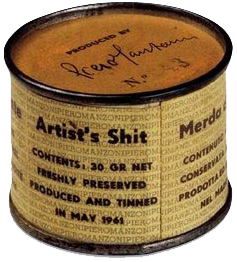WHAT IS ART?
What is Art, anyway? The answer can’t be so broad that everything is art, or the word is meaningless. Patrick Lencioni said, “If everything is special, then nothing is.” The contents of an art museum must somehow qualify more aptly as Art than that of the city dump. How then do we discern art from crap?
Oxford’s definition of art starts with “the expression or application of human creative skill and imagination…” It’s important to me that art require both skill and imagination. Conception and execution. Skill without imagination is craft, not art. And imagination without skill is just dreaming. Not to denigrate craft and dreaming; both are wonderful, but to me they’re not art.
While the exact distinction is different for each of us, there seems to be a general societal consensus about the dichotomy in general. This consensus changes over time and within subcultures, and reveals a lot about us. But where does this consensus come from?
ARBITERS OF TASTE
The art-world always has a number of elite cadres eager to announce What Is Great. These arbiters of taste include well-defined organizations like the American Film Academy and the International Association of Art Critics, but perhaps the contributions of symphony boards, collectors, and art curators are more influential. Either way, I contend that our tastes are molded by an elitist cognoscenti. And sometimes, the inwardly focused literati spirals out of control and leads us astray.
Consider the ars subtilior, a fourteenth-century offshoot of the better known ars nova style, which brought us an explosion of innovation (well, by medieval standards) in polyphonic composition. Ars subtilior was a very complicated style that was difficult to perform, and frankly hard to listen to. Musical historian Richard Hopper says the style “enabled the cantus to indulge in a wide variety of rhythmic complications, sometimes to the point of destroying all feeling of a consistent metrical organization.” Historical performer David Monroe calls the style a “late fourteenth century avant-garde” and complains that “the composer seems to be attempting to cram into one piece all the notational subtleties and intricate cross rhythms of which music is capable.” Conventional wisdom says the Ars subtilior was “probably produced, sung, and enjoyed by a small audience of specialists and connoisseurs.”
Doesn’t that sound like the technically challenging but largely unlisten-to-able product of twelve-point composition? Like the godawful formless cacophony of free jazz? Like all those other art forms whose appeal eludes the unpolished masses but is lauded by the self-congratulatory inner circle of critics? We’re not supposed to admit we can’t stomach these forms because that would be philistine, but you know it’s true.
No wonder we see our ironic hipsters eschewing the Arbiters of Taste and deliberately embracing products they don’t like, from Pabst Blue Ribbon to boomboxes.
PUSHING THE LIMIT
When Piero Manzoni shat in a can and labeled it Artist’s Shit, and when John Cage composed a completely silent work entitled 4’33”, that took imagination. My view is that because neither required any particular skill, they weren’t art. They were important works nonetheless because they compel us to examine the limitations of art. But not everything art-related and important is itself art.
And that’s precisely what I think Piero Manzoni was saying with his petulant can of crap. Manzoni knew it wasn’t Great Art, but it was important as a symbolic bitch-slap to the literati.
